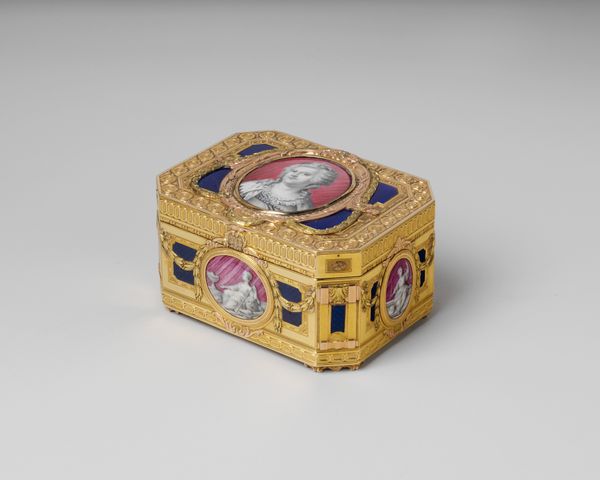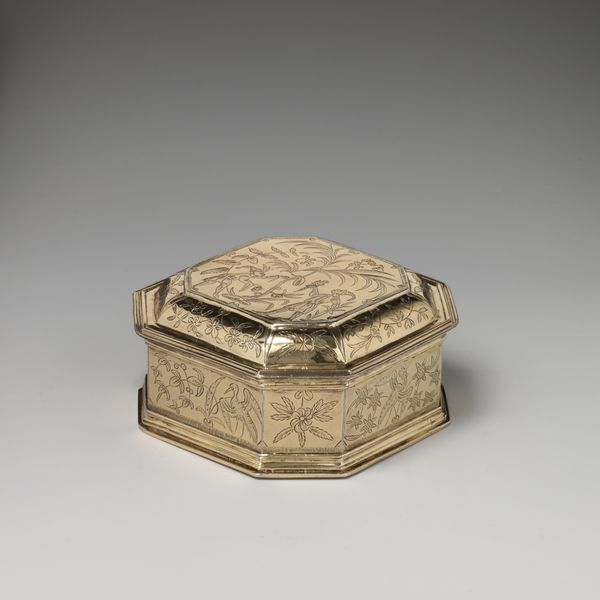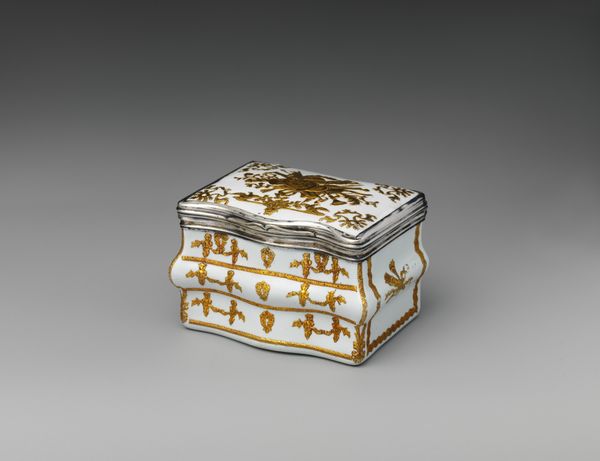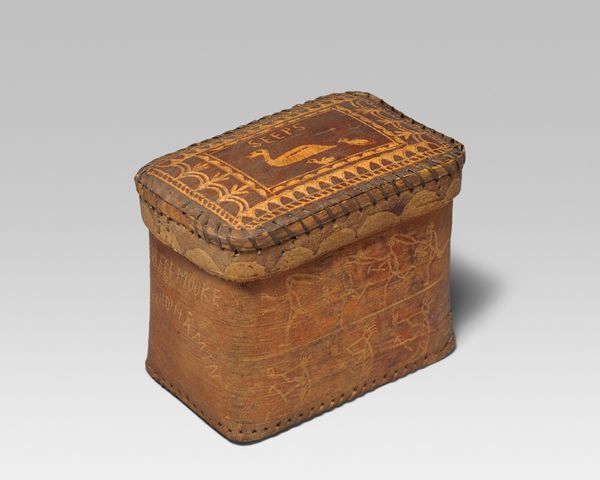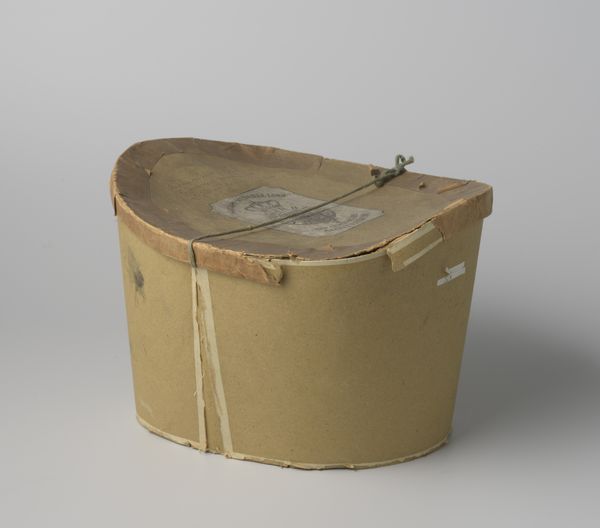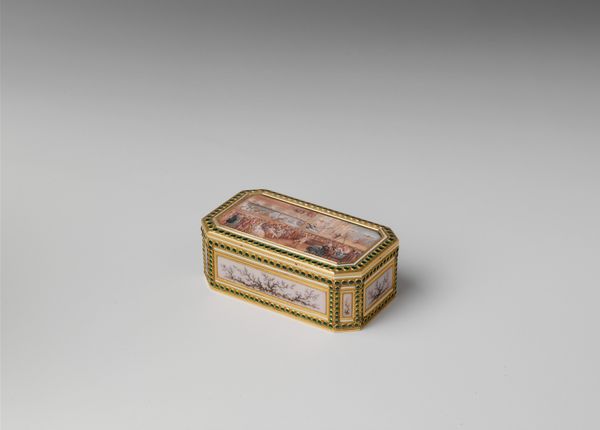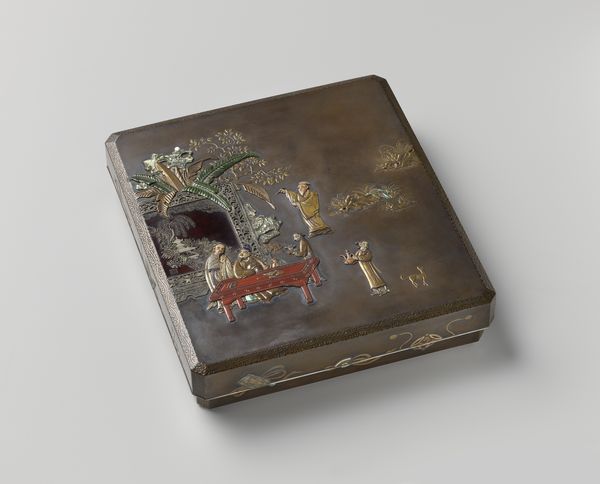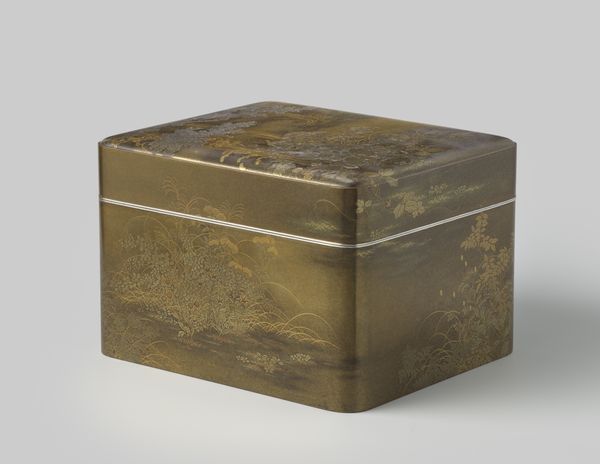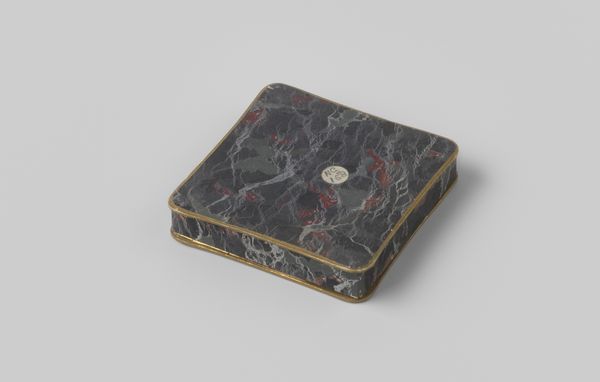
Dimensions: height 4.5 cm, length 7.9 cm, width 5.8 cm
Copyright: Rijks Museum: Open Domain
Editor: This delicate box, known simply as "Doos", dates back to somewhere between 1800 and 1850. It’s crafted from brass, gold, and enamel, showcasing these beautiful landscape miniatures. It really makes me think of Baroque extravagance on a miniature scale. What catches your eye about it? Curator: The box intrigues me because it speaks volumes about the social and cultural context of its time. Notice the ornate gold work and the meticulous landscape scenes. How might these features have reflected the status of the person who owned it? Editor: I imagine owning something so elaborate definitely signaled wealth. Was the subject matter of these landscapes particularly fashionable then? Curator: Absolutely. Landscape imagery, especially idealized views of nature and architecture, was popular amongst the elite. The images projected wealth, cultivation, and control over one's environment – a carefully curated vision, much like the art collections of the period. Do you think the choice of enamel connects it to a specific craft tradition or geographical location? Editor: Maybe Limoges enamel? Given the time period? It would explain the finesse! And how the gold and the enamel work together. What's your impression? Curator: I find it fascinating to consider the layers of meaning embedded within this small object. It is much more than a pretty little thing! Think about the artisan's skill, the patron's taste, and how decorative art reinforced social hierarchies and power structures. Editor: So it’s like a miniature time capsule reflecting an entire social landscape! It really shifts how I perceive it – I see not just artistry but also an embodiment of its historical moment. Curator: Exactly! By paying attention to social context, we uncover richer narratives in seemingly simple artworks.
Comments
No comments
Be the first to comment and join the conversation on the ultimate creative platform.
